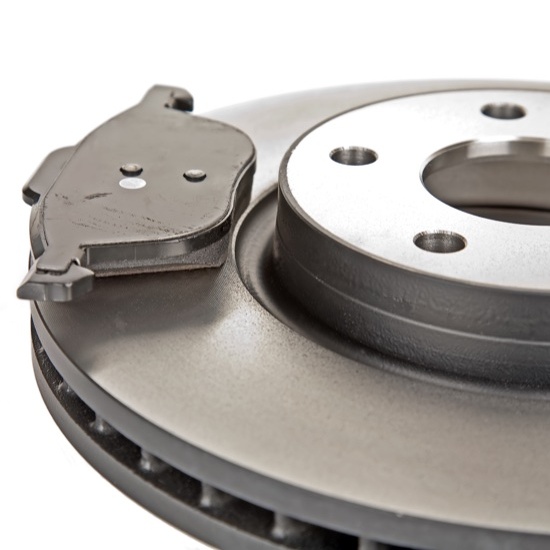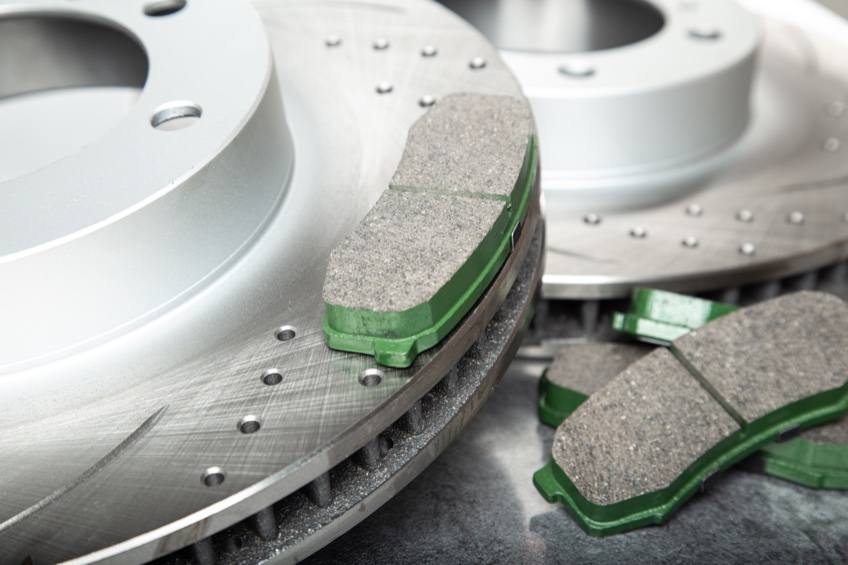
About Brake Pads
The engine has oil, the tank has gas, and the tires are aired up. You are ready to hit the road for that long-awaited vacation outside of Mission Viejo, California. But how are the brake pads? Once your car gets rolling, are you going to be able to stop suddenly?
There are many components involved in the brake system, this is one of the more important systems. But the principle system: You press on the brake pedal, and the car stops, right? Actually, it is more complicated than that.
When the brake pedal is pressed, oil is dispersed to the calipers on each wheel and the caliper pistons. The caliper pistons push the brake pads against either discs or rotors, causing friction. It is that friction that slows the wheel rotation, and the car slows down and comes to a stop. If any of these components fail, the brakes fail, including the brake pads. How do I know when my brake pads need changing? The basic rule that car manufacturers and mechanics will recommend is to replace your car’s brake pads every 50,000 miles unless they need it sooner.
Five Signs
The following five signs are signs brake pads need replacing:
- Squeaking or Squealing
This is usually the first sign that the brake pads need to be replaced, if the squeaking or squealing is persistently, non-stop.
- Indicator Light
In newer cars, they are equipped with brake pad sensors that trigger the brake light. If the indicator light is illuminated, this is another indication that the brake pads need replacing.
- Metal Grinding
If you hear the sound of metal grinding on metal, it is time for new brake pads.
- Vibrating Pedal
When you press on the brake pedal and it vibrates, this indicates the brake pads have worn down. Usually, the metal grinding follows next.
- Fourth Inch Thick
When you take your car to the mechanic, they will measure the brake pad thickness. If they are thinner than one-fourth of an inch, it is time for replacements.
How do I check my brake pads?
The best way is to have a professional mechanic inspect your brakes. But you can check them yourself using the following steps after they have cooled down.
- Check the brake fluid. If the brake fluid is dark, it is time for a brake system to flush and new fluid.
- Check the wheels for a buildup of brake dust. Brake dust is good, that means your brake pads are working. IF there is no brake dust, the brake pads are worn and need to be replaced.
- Inspect the brake pads through the slots of the wheels. Using a flashlight and if they are ¼” thick, or thicker, they are still good.
- Remove the wheels and examine the brake pads if you can’t see them through the wheel slots. Make sure your car is on level ground and the wheels are scorched. Raise the car six inches up and remove the lug nuts and tires. You should have a clear view of the brake pads. Again, if they are ¼” thick or thicker, they are still good.
Can I drive with brake pad warning light on?
If the brake light comes on, this is telling you it is time to have the brakes inspected while you still have brake pads left. Yes, you can drive the car for a short time, but too much driving will wear through the pads, to the rotors, and leave you with some expensive damage to repair.

What happens if you don’t replace brake pads?
There are 4 things that can happen when you ignore the brake light and the brake pads are worn:
- Your car doesn’t stop.
- Brake calipers and rotors get damaged.
- The tires wear down faster.
Can I just replace brake pads and not rotors?
Yes, if the brake rotors aren’t damaged or have worn too thin, changing just the brake pads will be sufficient. This is another time that taking your car to an experienced mechanic is the best solution, they are knowledgeable about the proper thickness of the rotors and pads.
Should you replace all 4 brake pads at once?
Yes, even if they don’t all look to be worn the same, change all four brake pads at the same time. However, if they aren’t worn out approximately the same, you should have the complete brake system inspected.
Do front brake pads wear faster than rear?
Yes, this is due to the bulk of the weight riding on the front ends when the brakes are applied. Over time, friction and heat contribute to the wear of brake pads.
Before You Hit The Road ….
Before you start out on your vacation road trip, make sure your gas tank is full, the oil is at the proper level, and have your brakes checked. What is the average life of brake pads? There are several different compositions and types of brake pads and even more different rotors. The general mileage you can expect from your brake pads is between 30,0000 miles and 70,000 miles, with many of them lasting up to 100,000 miles.
Japanese Car Specialties provides smooth services with brake pads in Mission Viejo, CA. Call 949-583-0811 for more information.